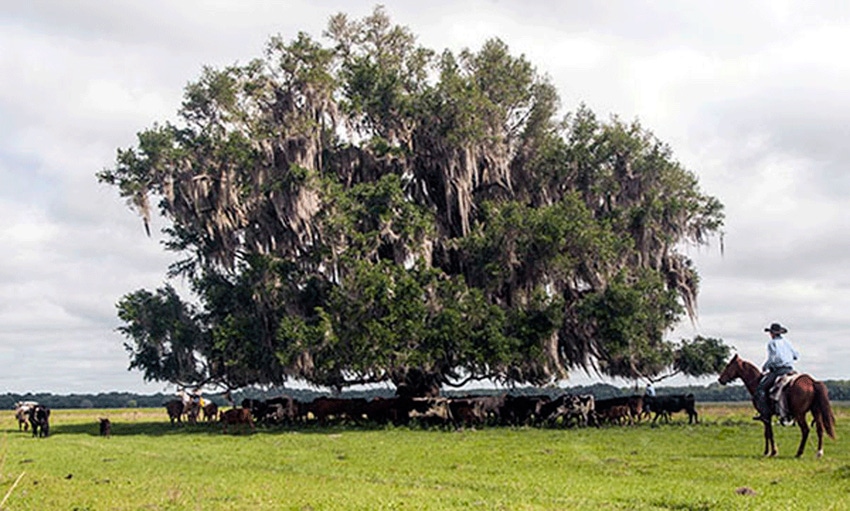August 16, 2016

Cracking cow whips echo loudly through the air as cowboys gallop hard through forest and open prairie, the dogs skillfully working the herd, driving 40-head of Cracker cows with their calves into pens just a few miles south of Gainesville, Fla.
The specially-bred Cracker Cur dogs and small, agile Cracker horses negotiate low tree branches, thick undergrowth and sweltering heat with ease. “This is old Florida. This land is part of what was once the largest cattle ranch in the country run by the Spanish, almost 500 years ago,” said Jack Gillen, a modern-day Cracker cowboy, nicknamed from the sound of their whips. He has leased Peter Frederick’s property for his cattle for 10 years.
The 282 acres of prairie, freshwater marshes, hammocks and stands of longleaf pine border Kanapaha Prairie, with more than 600 plant and animal species, including 29 that are threatened and endangered. The area is also vital to recharging the Floridan aquifer, the primary source of Florida’s drinking water supply.
Frederick and his wife bought the property 15 years ago. He teaches wetland science and restoration at the University of Florida’s Department of Wildlife Ecology and Conservation. “It is a sanctuary, a personal space for work and developing land management techniques,” he said.
The Florida Cracker Cattle breed that graze his land descend from those first brought to the state in the 1500s by the Spanish. They are hardier, disease and pest resistant, and forage during the winter when other breeds require feed. Cracker cows live longer, producing more calves continually and throughout the years. They are sold locally for meat or breeding stock. Gillen and his crew round them up a couple times a year. “It’s a great agricultural practice and keeps a vibrant culture alive,” Frederick said.
The dynamic between grazing and wetlands interests Frederick. “A longstanding practice all over the world, grazing keeps the trees out and maintains the wetlands. Many places in South America have centuries-long histories of ranching in grasslands and wetlands. The Venezuelan Llanos and the Brazilian Pantanal are good examples. Some of those ranches are over 300-years old,” he said.
Frederick is comparing the effects of mowing, burning and grazing on several 20 by 80 meter test plots to increase the diversity and productivity of his wetlands. Fenced areas preserve wildlife habitat. “We have one of the only little blue heron nesting colonies in the county, resident sand hill cranes and lots of alligators,” he said.
The property’s beauty and location makes it prime real estate, vulnerable to development as the nearby city of Gainesville expands. Fortunately, Frederick’s property is protected in perpetuity. He entered it into a conservation easement in 2008 with USDA’s Natural Resources Conservation Service (NRCS) and Alachua County Forever, which requires he keep the land in agriculture.
“It’s a constant reminder that we can produce food and wildlife in the same space, and keep ecosystems intact,” said Frederick.
You May Also Like




